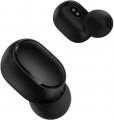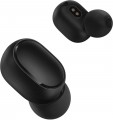Sensitivity
Rated headphone sensitivity. Technically, this is the volume at which they sound when a certain standard signal from the amplifier is connected to them. Thus, sensitivity is one of the parameters that determine the overall volume of the headphones: the higher it is, the louder the sound will be with the same input signal level and other things being equal. However, we must not forget that the volume level also depends on the resistance (impedance, see above); moreover, it is worth choosing “ears” for a specific device first by impedance, and only then by sensitivity. In this case, one parameter can be compensated for by another: for example, a model with high resistance and high sensitivity can work even on a relatively weak amplifier.
As for specific figures, headphones with indicators of 100 dB or less are designed mainly for use in a quiet environment (in some similar models, the sensitivity
does not exceed 90 dB). For use on the street, in transport and other similar conditions, it is desirable to have more sensitive headphones — about
101 – 105 dB, or even
110 dB. And in some models, this figure can reach
116 – 120 dB. and even
more.
It is also worth noting that this parameter is relevant only for a wired connection according to the analogue standard — for example, via a 3.5 mm mini-
...jack. When using digital interfaces like USB and wireless channels like Bluetooth, the sound is processed in the built-in headphone converter, and if you plan to mainly use this kind of application, you can not pay much attention to sensitivity.Speaker size
The diameter of the speaker installed in the headphones; models with multiple drivers (see "Number of drivers"), usually, the size of the largest speaker is taken into account, other dimensions can be specified in the notes.
In general, this parameter is relevant primarily for over-ear headphones (see "Design"). In them, emitters can have different sizes; the larger it is, the more saturated the sound is and the better the speaker reproduces the bass, however, large emitters have a corresponding effect on the dimensions, weight and price of the headphones. But in-ear "ears" and earbuds, by definition, have very small speakers, and rich bass in them is achieved due to other design features.
Microphone noise canceling
The presence of a noise reduction system in its own headphone microphone.
In accordance with the name, such a system is designed to eliminate extraneous noise - primarily during conversations. It is usually based on an electronic filter that passes the sound of a human voice and cuts off background sounds such as city noise, the rumble of wind in the microphone grille, etc. As a result, even in noisy environments, thanks to the
noise reduction of the microphone, speech is clear and intelligible; True, the system inevitably introduces distortions into the final sound, but they are not critical in this case.
— ENC. ENC (Environment Noise Cancellation) technology significantly reduces ambient noise with directional microphones. It is used both in gaming devices so that gamers can easily communicate in voice chat, and in TWS earphone models so that you can comfortably talk on the phone in a noisy environment.
— cVc. Microphone noise reduction cVc (Clear Voice Capture) is an advanced technology that is found mainly in expensive headphone models. cVc algorithms effectively suppress echo and noise from the environment. Sound processing using this technology is carried out at several levels at once - the algorithm determines the reference signal-to-noise level, automatically adjusts speech to the desired volume level, applies adaptive equalizers to process the entire voice, as well as specialized filters to remove
...low-frequency bubbling, sibilants and hissing.Case battery capacity
The capacity of the battery installed in the case (case) for headphones.
This parameter is relevant only for true wireless models (see "Cable type"). Recall that these headphones are charged from a case, which is usually equipped with its own battery and actually works in standalone power bank mode. Knowing the capacity of the battery in the case and in the headphones, you can estimate how many charges of the “ears” will last for one charge of the case. However, it should be taken into account that in the process of charging the headphones, part of the energy is inevitably spent on third-party losses, and the effective capacity of the case turns out to be somewhere 1.6 times less than the claimed one. This is the starting point for calculations: for example, a 300 mAh case will actually be able to transfer 300 / 1.6 = 187 mAh of energy to the headphones, and 30 mAh “ears” from such a battery can be fully charged about 6 times (187 / 30 ≈ 6).
Charging time
The time required to fully charge the battery in properly powered headphones (see above).
In this case, we mean the battery charging time from 0 to 100% when using a standard charger (or a third-party charger with identical characteristics). Accordingly, in fact, this indicator may differ from the claimed one, depending on the specifics of the situation. However, in general, it is quite possible to evaluate different models and compare them with each other: headphones with a shorter claimed charging time will in fact charge faster (ceteris paribus).
Also note that an increase in battery capacity (and headphone battery life) inevitably implies an increase in charging time. To compensate for this moment, special fast charging technologies can be used — however, they affect the cost and require the use of specialized charger.
Operating time (with case)
The maximum operating time of TWS headphones, taking into account recharging with a native case. But this time is not continuous use, it takes into account breaks for "refueling". Anyway, this parameter allows you to understand for how long you can leave the network (for example, how many nights to spend in a tent to the accompaniment of your favorite artist).
Charging port
The type of connector used to charge the built-in battery of the headphones, or more precisely, to connect an external charger. The role of such a device can be played by a network or car adapter, a power bank, or even a USB port of a PC or laptop (if there is an appropriate cable). At the same time, in true wireless models (there are
with a leg,
without a leg,
with an ear mount and
clips (Clip-on)), the "charger" cable is connected to a special docking station, where the "ears" are placed during charging (while the station itself usually has its own battery and can also work as an autonomous power bank). And in wireless and combined solutions of a more traditional design, the charging input is often located on the body of the headphones themselves. As for the connectors, the most common options are the following:
—
microUSB. A smaller version of the USB connector, created for portable devices. It appeared quite a long time ago, but it has not lost its popularity in our time, and is used by the absolute majority of manufacturers.
—
USB C. A miniature USB connector, positioned, among other things, as a potential successor to microUSB. Unlike its predecessor, it has a two-sided design, thanks to which the plug can be inserted into the socket from either
...side. It is still relatively rare, but the situation is likely to change in the coming years.
— Lightning. Apple's proprietary connector. Like USB C, it has a two-sided design, and is somewhat more convenient and reliable, but the use of Lightning is limited to products from Apple itself and its Beats brand.Waterproof
The headphones have special protection against moisture and dust; also, this clause may specify the level of such protection according to the IP standard.
Not all
waterproof headphones allow complete immersion in water, but in this case this is usually not required — water protection is mainly intended for safe operation in the rain (or during sports activities when the user sweats a lot). But the specific degree of such protection in different models can vary markedly, and here it is most convenient to evaluate it by IP marking. This marking consists of the letters IP and two numbers; moisture resistance is described by the second, last digit, and in modern headphones you can find the following options:
— 2. Protection against vertical drops of water in the working position and when the device deviates up to 15 ° from this position. The minimum indicator that allows us to talk about resistance to rain (however, without strong winds).
— 3. Protection against splashes falling vertically or at an angle up to 60° from the vertical. Provides resistance to moderate rain and strong winds.
—
4. Splash proof from any direction. With such headphones, rain of medium intensity is not terrible, regardless of the strength of the wind.
—
5. Protected against water jets from any direction. Allows you to transfer already a combination of strong wind w
...ith a downpour.
— 6. Protection against strong water jets. It is considered the minimum level that allows you to swim safely (with your head above the surface of the water) wearing headphones.
— 7. Possibility of short-term (less than half an hour) immersion under water to a shallow depth (less than 1 m); continuous operation in immersed mode is not expected. In such headphones, you can no longer only swim, but also dive under water to a shallow depth (plunge with your head), but they are not suitable for full-fledged diving.
— 8. The highest level of water protection actually found in modern headphones (although theoretically there is a higher level, level 9). Allows long-term (more than 30 minutes) immersion under water to a depth of 1 m or more, and even permanent work in a submerged position. And although the latter is not particularly relevant for headphones, however, this degree of protection makes it possible to swim and even dive safely. However, note that specific restrictions on use in such headphones may be different, they must be clarified according to the instructions.
As for protection against dust (it is indicated by the first digit in the IP marking), its level in modern “ears” is indicated mainly in cases where it corresponds to level 4 (protection against objects 1 mm thick or more), 5 (allowed a small amount of dust that does not affect the operation of the device) or 6 (complete protection against dust). Also note that this number can be replaced by the letter "X" — for example, IPX7; this means that no official dust certification has been carried out for this model. However, this resistance in many cases can be assessed by the degree of protection against moisture: for example, devices with a moisture resistance of 7 or 8, by definition, do not let water through — which means that they are also not afraid of dust.
